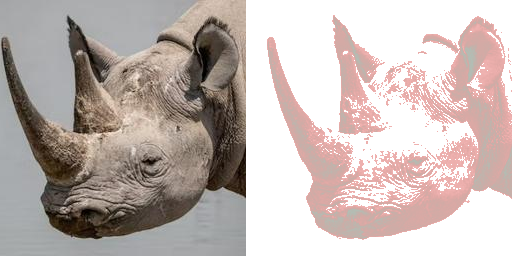4. Image eval
4.1. Eval
Use the
Image.eval(image, *args) method to return an image with which has each pixel evaluated by the specified function, referred to by *args.Applies the function (which should take one integer argument) to each pixel in the given image.
If the image has more than one band, the same function is applied to each band.
Note that the function is evaluated once for each possible pixel value, so you cannot use random components.
from PIL import Image
def eval_func_light(x):
return x + 55
def eval_func_inv(x):
return 255 - x
with Image.open("test_images/rhino.jpg") as im:
im1 = Image.eval(im, eval_func_light)
# im1.show()
im1.save("Image/Image_eval_light.png")
im2 = Image.eval(im, eval_func_inv)
# im2.show()
im2.save("Image/Image_eval_inv.png")

4.2. Eval for a mask
The code below converts the image to greyscale then uses the eval method to create a new image, im_mask, based on its greyscale pixel levels.
A white image, level 255, with the im_mask used as a mask as it is pasted over a new image of (178,190,181) color.
def eval_mask(x):
return x if x <= 145 else 255
with Image.open("test_images/rhino.jpg") as im:
im1 = im.convert("L")
im_mask = Image.eval(im1, eval_mask)
# mask.show()
im1 = Image.new("RGBA", (256, 256), (178,190,181))
im1.paste(255, im_mask)
# im1.show()
im1.save("Image/Image_eval_alpha.png")
